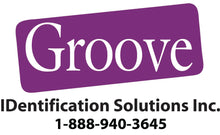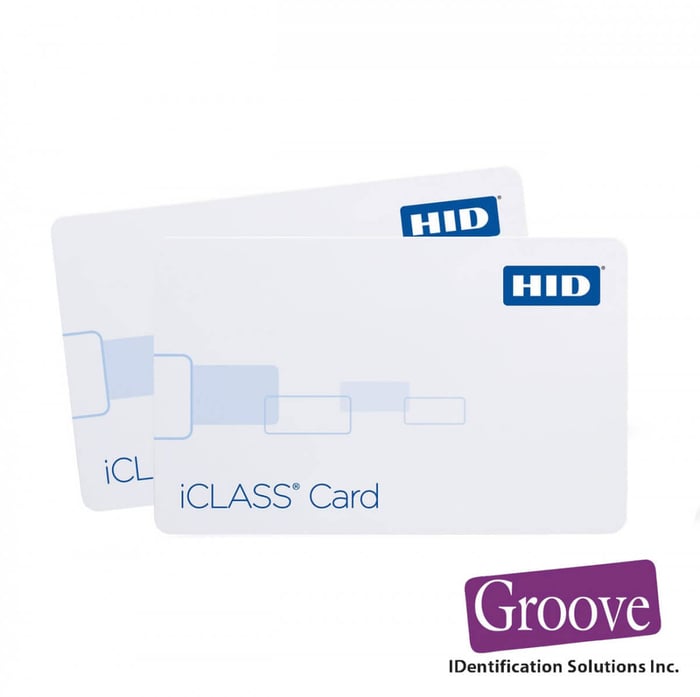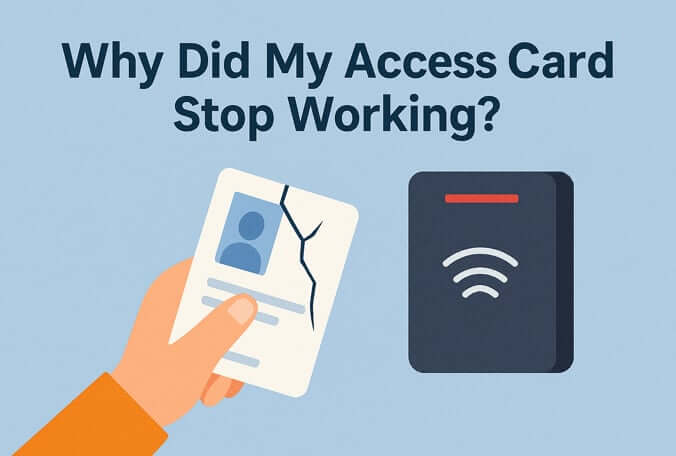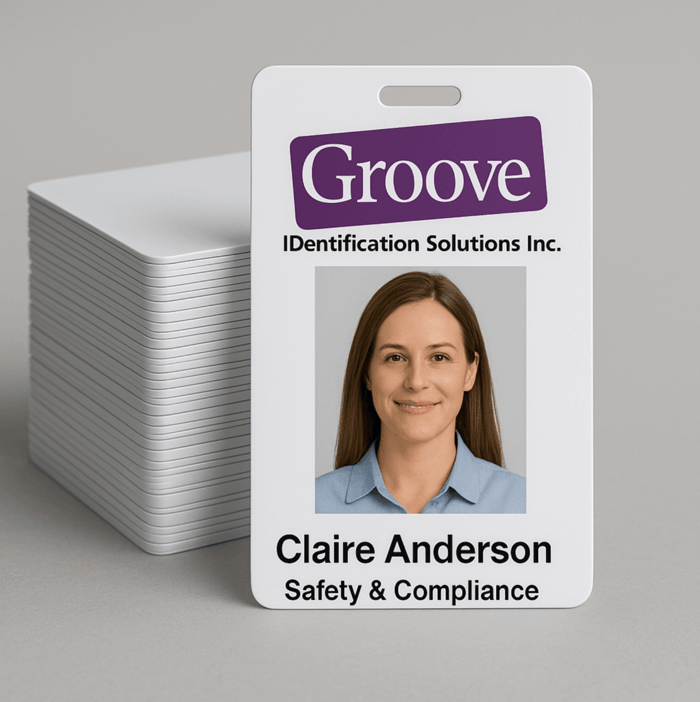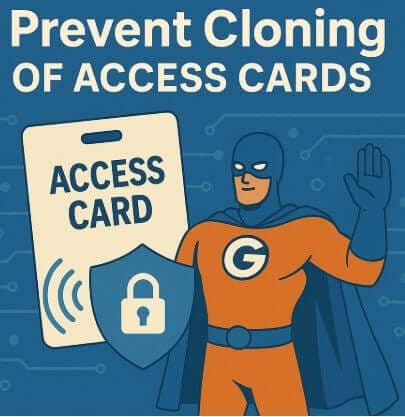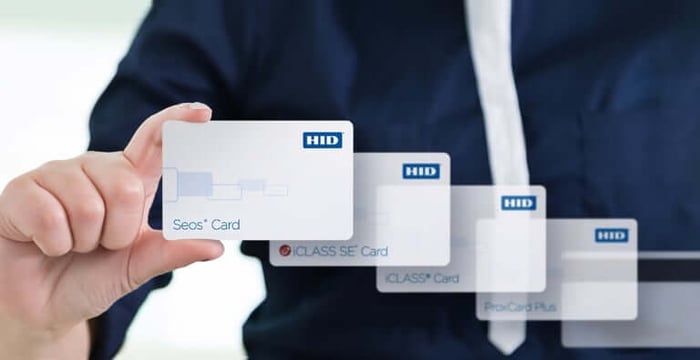 HID Cards- The Ultimate Guide for 2025
HID Cards- The Ultimate Guide for 2025
Introduction
HID Access Cards : The Ultimate Guide and Everything You Need to Know in 2025
In today’s fast-paced world, controlling who has access to your physical spaces is more important than ever. HID Global is one of the most trusted names in access control—play a critical role in securing offices, hospitals, universities, and government buildings across Canada and beyond. But what exactly are HID Cards? How do they work? And which one is right for your organization?
In this comprehensive guide, we’ll cover everything you need to know about HID access cards in 2025—from Prox to Seos and everything in between—so you can make informed decisions and stay ahead of security risks like card cloning and credential duplication.
What Are HID Access Cards?
HID Global is a leading manufacturer of secure identity solutions. Their access cards are used to control entry to secure areas using RFID (Radio Frequency Identification) or NFC (Near Field Communication) technology. HID cards are commonly integrated into access control systems using card readers that validate each user’s credentials.
Types of HID Access Cards
Choosing the right type of HID card depends on your building’s infrastructure, security level, and compatibility with existing systems. Here’s a breakdown of the most common options:
1. HID Prox Cards (125kHz)
Proximity cards are the most widely deployed HID cards. They use low-frequency RFID technology and are often found in legacy systems.
Pros:
Inexpensive
Widely supported
Cons:
Easily cloned
No encryption
Best for: Low-security environments with older infrastructure.
2. HID iCLASS Cards (13.56MHz)
iCLASS cards offer higher security with encryption and mutual authentication between card and reader.
Pros:
Encrypted data
Higher memory capacity
Cons:
Higher cost than Prox
May not be backward compatible with legacy systems
Best for: Medium to high-security applications like healthcare and education.
3. HID iCLASS SE & Seos Cards
Seos cards use advanced encryption and are compatible with mobile credentials. They offer multi-application support and future-proof security features.
Pros:
Mobile-ready
Secure mutual authentication
Interoperable with other HID products
Cons:
May require reader upgrades
Premium cost
Best for: Enterprises, hospitals, universities, and government facilities.
Smart Cards vs. Prox Cards: What's the Difference?
Prox cards are “read-only.” They transmit a static number and have no encryption.
Smart cards, like iCLASS and Seos, use secure microprocessors and encrypted communication.
| Feature | Prox Cards | Smart Cards |
|---|---|---|
| Encryption | No | Yes |
| Mobile Support | No | Yes (Seos) |
| Data Capacity | Limited | High |
| Clone Risk | High | Low |
Are HID Access Cards Secure? Can They Be Cloned?
Security varies by card type:
Prox Cards: Can be cloned using inexpensive hardware. These cards are not encrypted, making them susceptible to duplication.
iCLASS Cards: Offer some protection, but older versions (iCLASS Classic) have been compromised.
Seos Cards: Currently the most secure, with AES encryption and digital signatures.
Tip: If you’re still using Prox, it may be time to upgrade to a secure format like Seos or iCLASS SE.
How HID Cards Work with Card Readers
HID cards use RFID or NFC to communicate with access control readers. When a card is tapped or waved near the reader:
The reader transmits power via radio waves.
The card responds with a credential number or encrypted token.
The access control panel verifies the credential and triggers the lock if valid.
Popular HID Card Formats and Part Numbers
HID 1326 ProxCard II (125kHz)
HID 1386 ISOProx II
HID 2000 iCLASS 16k
HID 5005 Seos 8k
If you're unsure which part number matches your system, consult an Authorized HID Global Solutions Provider like Groove Identification Solutions.
Using Mobile Access with HID Cards
HID Mobile Access uses Bluetooth and NFC, allowing users to unlock doors using smartphones instead of plastic cards.
Benefits:
Contactless and convenient
Easily issued or revoked remotely
Works with Apple Wallet and Android devices
Requirements:
HID Mobile Access licenses
Compatible mobile-ready readers (e.g., iCLASS SE readers)
How to Choose the Right HID Card
When selecting a card, consider:
Reader compatibility: Older readers may not support Seos or Mobile Access.
Security requirements: Higher security requires smart cards or Seos.
Budget: Prox is cheaper, but smart cards are more secure.
Card format and facility codes: Match your access control system’s settings.
HID Card Printer Compatibility
Many organizations personalize cards with photo ID, logos, or barcodes. HID cards are compatible with most major ID card printers like:
HID Fargo HDP5000
Fargo INK1000
Evolis Primacy 2
Magicard 300/600
Pro Tip: Choose a retransfer printer for smart cards to avoid damaging embedded chips.
Common Industries Using HID Access Cards
Healthcare: Hospitals use Seos cards for secure access and mobile credentialing.
Education: Universities use iCLASS for dorm access, printing, and meal plans.
Corporate: Offices and coworking spaces leverage HID for multi-site access.
Government: Uses highly encrypted cards for compliance and secure access.
Top Benefits of HID Access Cards
Scalability: Suitable for small businesses to enterprise applications.
Customizability: Can be printed, encoded, or embedded with additional tech.
Integration: Works with many access control systems and software platforms.
Cloning and Counterfeit Prevention
To reduce risk of cloning:
Avoid 125kHz Prox cards
Use Seos or iCLASS SE cards with mutual authentication
Enable encrypted card reader communication
Regularly audit and update credentials
Work with a trusted HID solution provider
Future Trends in Access Control
In 2025, HID Global and the security industry continue evolving:
Increased adoption of mobile credentials
Biometric integrations for multi-factor authentication
Eco-friendly cards using recycled materials or biodegradable components
Cloud-based access control platforms
Why Work With an Authorized HID Provider
Partnering with an authorized provider like Groove Identification Solutions ensures:
Correct format and facility code programming
Access to HID’s full line of products
On-site support and expert consultation
Secure product sourcing (no counterfeits)
Seamless integration with existing systems
FAQs
Q: Can I copy an HID card with my phone?
A: No. While some apps claim to copy RFID cards, HID’s smart cards (especially Seos) are encrypted and not cloneable using mobile apps.
Q: How long do HID cards last?
A: On average, 3–5 years depending on usage and environment.
Q: Can I reuse or reprogram an HID card?
A: It depends on the card type. Most cards are write-once, especially Prox cards. Smart cards may support reprogramming with the right tools.
Q: What’s the difference between HID and MIFARE?
A: HID is a brand. MIFARE is a type of card technology. HID offers MIFARE-compatible cards, but Seos and iCLASS are their proprietary technologies.
Questions?
Give us a call! 1-888-940-3645
Web: groovebadges.com
